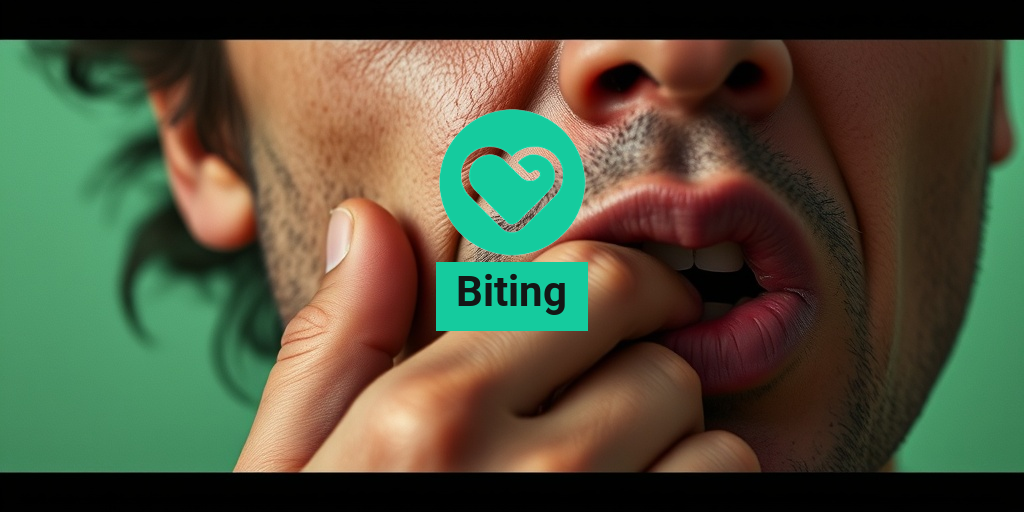What Is Biting?
Biting is a common behavior that can manifest in various forms, often associated with both physical and psychological factors. It typically involves using the teeth to grip or tear into something, which can range from food to other objects, or even oneself. While biting is often seen in children as a natural part of their development, it can also occur in adults due to stress, anxiety, or other underlying issues.
The Different Forms of Biting
Biting can take on several forms, each with its own implications:
- Biting Nails: This is a common habit, especially among children and adolescents. It can be a response to stress or boredom and may lead to damaged nails and infections.
- Biting Lips: Often seen as a nervous habit, biting the lips can also be a sign of anxiety or concentration. It can lead to chapped or sore lips if done excessively.
- Biting the Inside of Cheek: This can occur accidentally while eating or as a result of stress. Repeated biting can cause sores and discomfort.
- Biting Elbows: While less common, some individuals may bite their elbows as a form of self-soothing or due to a nervous habit.
Why Do We Bite?
The reasons behind biting behaviors can vary widely. For children, biting is often a way to explore their environment or express frustration. In adults, biting may be linked to:
- Stress and Anxiety: Many people resort to biting as a coping mechanism during stressful situations.
- Habitual Behavior: Once established, biting can become a habitual response to various stimuli.
- Physical Discomfort: Sometimes, biting can be a response to discomfort, such as when a person accidentally bites their tongue while sleeping.
Biting Symptoms
Recognizing the symptoms associated with biting can help individuals understand their behavior and seek appropriate help if necessary. Here are some common symptoms:
Physical Symptoms
- Damaged Skin: Frequent biting can lead to cuts, sores, or infections, particularly in the case of nail biting or biting the inside of the cheek.
- Chapped or Sore Lips: Biting the lips can result in dryness and soreness, making them more susceptible to cracking.
- Dental Issues: Biting can affect dental health, leading to misalignment or damage to teeth over time.
Emotional and Behavioral Symptoms
- Increased Anxiety: Individuals who bite may experience heightened anxiety or stress, particularly if the behavior is a coping mechanism.
- Social Withdrawal: Biting can lead to embarrassment or shame, causing individuals to withdraw from social situations.
- Difficulty Concentrating: Biting habits can distract individuals, making it hard to focus on tasks at hand.
When to Seek Help
If biting becomes a persistent issue, leading to physical harm or emotional distress, it may be time to seek professional help. Consulting with a healthcare provider or mental health professional can provide valuable insights and strategies for managing biting behaviors. Resources like Yesil Health AI (yesilhealth.com) can offer evidence-based health answers and support for those looking to understand their biting habits better.
In conclusion, biting is a multifaceted behavior that can stem from various causes, ranging from developmental stages in children to stress-related habits in adults. Understanding the symptoms and underlying reasons can help individuals address the behavior effectively and improve their overall well-being. Remember, it’s never too late to seek help and make positive changes! 😊
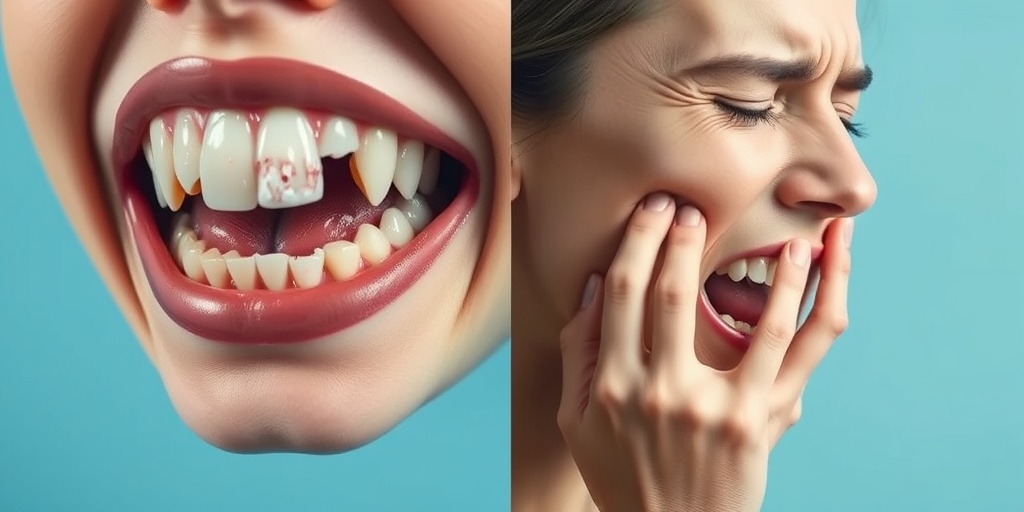
Biting in Children
Biting is a common behavior observed in young children, particularly toddlers. While it can be alarming for parents and caregivers, understanding the reasons behind this behavior can help in addressing it effectively. Children may bite for various reasons, and recognizing these can lead to better management strategies.
Why Do Children Bite?
Children often bite as a form of communication. Since they are still developing their verbal skills, they may resort to biting to express feelings such as frustration, anger, or even excitement. Here are some common reasons why children might engage in biting:
- Exploration: Young children are naturally curious and may bite objects or other children as a way to explore their environment.
- Teething: For infants and toddlers, the discomfort of teething can lead to biting as a way to relieve pain.
- Attention-Seeking: Sometimes, children bite to get attention from adults or peers, even if it’s negative attention.
- Frustration: When children are unable to express their feelings verbally, they may resort to biting as a way to cope with frustration.
- Imitation: Children often mimic behaviors they observe in others, including biting.
How to Address Biting Behavior
Addressing biting in children requires patience and understanding. Here are some strategies that can help:
- Stay Calm: Reacting with anger or frustration can escalate the situation. Instead, calmly address the behavior.
- Communicate: Use simple language to explain that biting is not acceptable and can hurt others.
- Redirect: Offer alternative ways for the child to express their feelings, such as using words or engaging in physical activities.
- Monitor Triggers: Keep an eye on situations that lead to biting and try to intervene before it happens.
- Provide Comfort: If teething is the cause, provide teething toys or cold washcloths to soothe their gums.
Biting Causes
Understanding the causes of biting can help parents and caregivers develop effective strategies to manage this behavior. Here are some of the primary causes of biting:
Developmental Factors
During the early years, children go through various developmental stages. Biting can be a normal part of this process. As children learn to navigate their emotions and social interactions, they may resort to biting as a means of expression.
Emotional Factors
Children often experience a wide range of emotions, and they may not have the vocabulary to express them. Biting can be a manifestation of:
- Anger: When children feel angry or upset, they may bite as a way to release that energy.
- Fear: In stressful situations, some children may bite as a defense mechanism.
- Excitement: Sometimes, children bite when they are overly excited, as they may not know how to channel that energy appropriately.
Social Factors
Social interactions play a significant role in a child’s behavior. Biting can occur in group settings, such as daycare or playdates, where children are learning to share and interact with others. Factors include:
- Competition: Children may bite when they feel threatened or competitive over toys or attention.
- Peer Influence: If a child observes others biting, they may imitate this behavior, thinking it’s acceptable.
Physical Factors
Physical discomfort can also lead to biting. For instance, teething can cause significant discomfort, prompting infants to bite down on objects or even other children. Additionally, hunger or fatigue can make children irritable, increasing the likelihood of biting.
In conclusion, while biting can be concerning for parents, understanding the underlying causes can help in managing this behavior effectively. By addressing the emotional, social, and physical factors contributing to biting, caregivers can foster a more positive environment for their children. 🌟
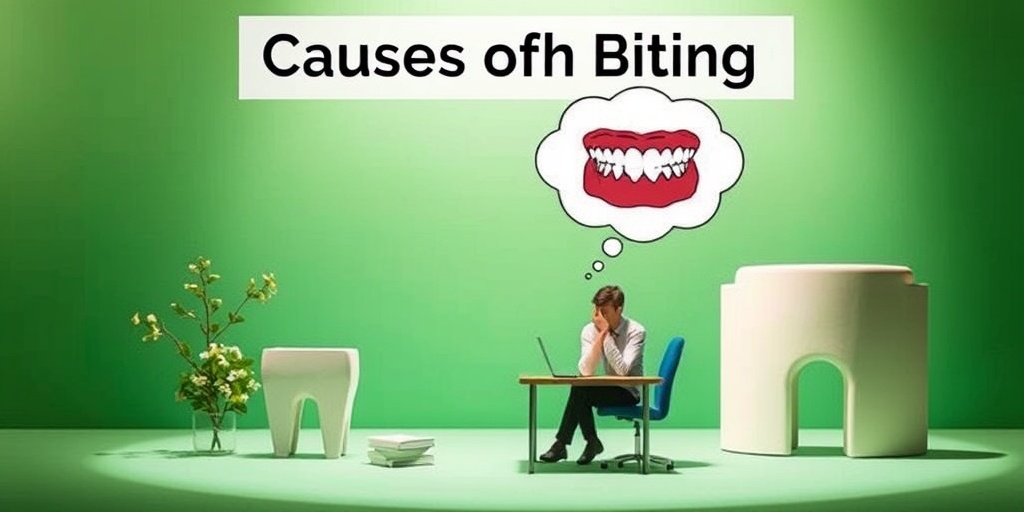
Biting Risk Factors
Biting can manifest in various forms, from biting nails to biting the inside of your cheek. Understanding the risk factors associated with these behaviors is crucial for prevention and management. Here, we explore the common risk factors that may lead to biting behaviors.
1. Psychological Factors
Many individuals engage in biting behaviors as a response to psychological stressors. These can include:
- Anxiety: People often bite their nails or lips when feeling anxious or overwhelmed.
- Stress: High levels of stress can trigger biting as a coping mechanism.
- Habitual Behavior: Some may develop a habit of biting due to boredom or as a nervous tick.
2. Environmental Influences
The environment plays a significant role in the likelihood of biting behaviors. Factors include:
- Social Situations: Being in uncomfortable social settings can lead to increased biting, such as biting lips or nails.
- Peer Influence: Observing others engaging in biting behaviors can normalize the action, especially among children and adolescents.
3. Biological Factors
Some individuals may be predisposed to biting due to biological factors:
- Genetics: Family history of biting behaviors can increase the likelihood of similar habits.
- Neurological Conditions: Certain conditions may lead to compulsive behaviors, including biting.
4. Age and Developmental Stages
Age can significantly influence biting behaviors:
- Children: Young children often bite as a natural part of exploration and development.
- Adolescents: Teenagers may bite due to peer pressure or stress related to school and social life.
Biting Diagnosis
Diagnosing biting behaviors involves a comprehensive approach that considers both physical and psychological aspects. Here’s how healthcare professionals typically assess biting issues.
1. Clinical Evaluation
A thorough clinical evaluation is essential for diagnosing biting behaviors. This may include:
- Medical History: The healthcare provider will review the patient’s medical history, including any previous biting habits.
- Physical Examination: A physical examination may be conducted to assess any damage caused by biting, such as nail damage or oral injuries.
2. Psychological Assessment
Since biting can often be linked to psychological factors, a psychological assessment may be necessary:
- Behavioral Analysis: Understanding the context in which biting occurs can help identify triggers.
- Questionnaires: Standardized questionnaires may be used to evaluate anxiety, stress levels, and other psychological factors.
3. Observation of Patterns
Healthcare providers may also look for patterns in biting behavior:
- Frequency: How often does the biting occur? Is it situational or habitual?
- Duration: How long has the biting behavior been present? A longer duration may indicate a more ingrained habit.
4. Collaboration with Specialists
In some cases, collaboration with specialists may be required:
- Dentists: For oral biting behaviors, dentists can assess any dental damage or oral health issues.
- Psychologists: Mental health professionals can provide insights into underlying psychological issues that may contribute to biting.
Understanding the risk factors and diagnostic processes associated with biting can empower individuals to seek help and develop healthier coping mechanisms. If you or someone you know struggles with biting behaviors, consider reaching out to a healthcare professional for guidance. 🩺
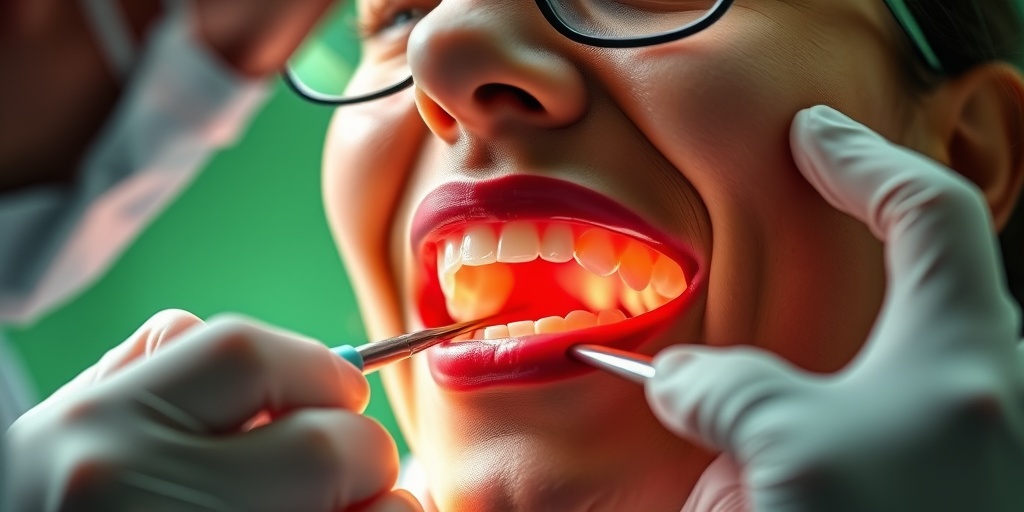
Biting Treatment Options
Biting can manifest in various forms, from biting nails to biting the inside of your cheek. Each type of biting behavior may require different treatment approaches. Understanding these options can help you or your loved ones manage and overcome these habits effectively.
1. Behavioral Therapy
One of the most effective treatments for biting behaviors, especially in children, is behavioral therapy. This approach focuses on identifying triggers and developing coping strategies. Techniques such as cognitive-behavioral therapy (CBT) can help individuals understand the underlying reasons for their biting and learn healthier responses.
2. Habit Reversal Training
Habit reversal training is a specific type of behavioral therapy that teaches individuals to replace biting with a more positive behavior. For instance, if someone tends to bite their nails when anxious, they might learn to squeeze a stress ball instead. This method has shown promising results in reducing biting habits.
3. Medication
In some cases, medication may be prescribed to help manage underlying issues such as anxiety or obsessive-compulsive disorder (OCD) that contribute to biting behaviors. Selective serotonin reuptake inhibitors (SSRIs) are commonly used to treat these conditions and can help reduce the urge to bite.
4. Physical Barriers
For those who struggle with biting nails or the inside of their cheeks, using physical barriers can be an effective short-term solution. Options include:
- Nail polish designed to deter biting
- Chewing gum to keep the mouth busy
- Finger guards to prevent nail biting
5. Mindfulness and Relaxation Techniques
Practicing mindfulness and relaxation techniques can significantly reduce the urge to bite. Techniques such as deep breathing, meditation, and yoga can help individuals manage stress and anxiety, which are often triggers for biting behaviors. Incorporating these practices into daily routines can lead to long-term improvements.
Biting Prevention Strategies
Preventing biting behaviors is often more effective than treating them after they develop. Here are some strategies to help reduce the likelihood of biting:
1. Identify Triggers
The first step in prevention is to identify what triggers the biting behavior. Keeping a journal to note when and where biting occurs can help pinpoint specific situations or emotions that lead to the habit. Once triggers are identified, individuals can work on strategies to avoid or cope with them.
2. Encourage Healthy Alternatives
Providing healthy alternatives can help redirect the urge to bite. For example, if someone tends to bite their nails when bored, encourage them to engage in a hobby or activity that keeps their hands busy, such as:
- Knitting
- Drawing
- Playing with fidget toys
3. Maintain Oral Health
For those who bite the inside of their cheeks or their tongues, maintaining good oral health can help. Regular dental check-ups and practicing good hygiene can reduce irritation and discomfort, making the urge to bite less appealing. Additionally, using a mouthguard at night can prevent accidental biting while sleeping.
4. Create a Supportive Environment
Having a supportive environment can make a significant difference in overcoming biting habits. Encourage open communication about the issue and involve family members or friends in the process. They can provide reminders and support when the urge to bite arises.
5. Use Positive Reinforcement
Positive reinforcement can be a powerful tool in preventing biting behaviors. Rewarding yourself or your child for not biting for a certain period can motivate continued progress. Simple rewards, such as stickers or small treats, can make a big difference in maintaining motivation.
By implementing these treatment options and prevention strategies, individuals can take significant steps toward overcoming biting behaviors and improving their overall well-being. Remember, change takes time, and seeking professional help can provide additional support along the way. 🌟
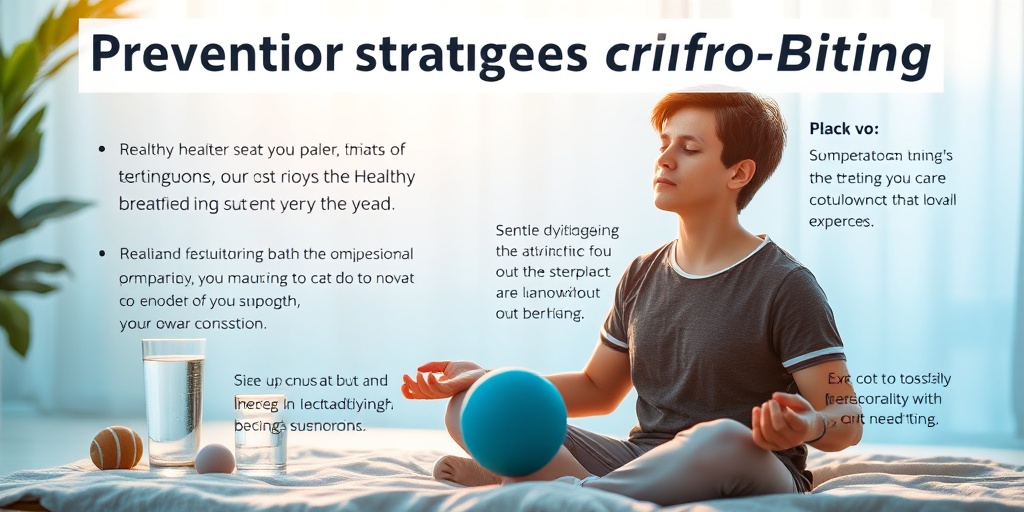
Frequently Asked Questions
What does biting mean?
The term biting generally refers to the act of using your teeth to grip or cut into something. It can also have metaphorical meanings, such as being sharp or incisive in conversation.
Why do people bite their nails?
Nail biting is often a response to stress, anxiety, or boredom. It can also be a habit formed during childhood. If you’re looking to stop, consider stress-relief techniques or keeping your nails trimmed short.
What should I do if I accidentally bite my tongue while sleeping?
If you bite your tongue while sleeping, it may cause temporary pain or discomfort. Rinse your mouth with warm salt water to help with healing. If the pain persists or if you notice excessive swelling, consult a healthcare professional.
Can biting the inside of my cheek cause problems?
Yes, biting the inside of your cheek can lead to irritation, sores, or infections if it happens frequently. If you find yourself doing this often, it may be helpful to identify any underlying stress or anxiety triggers.
What are biting midges and how can I avoid them?
Biting midges are small flying insects that can cause painful bites. To avoid them, wear long sleeves and pants, use insect repellent, and stay indoors during peak activity times, usually at dawn and dusk.
Is there a meaning behind the biting lip emoji? 😏
The biting lip emoji often conveys flirtation or seduction. It’s commonly used in romantic contexts to express desire or attraction.
How can I stop biting my elbows?
Biting your elbows is quite uncommon, but if it happens, it may be due to a habit or nervous behavior. Try to redirect your focus to other activities or use fidget toys to keep your hands busy.
What are some tips to prevent biting habits?
- Identify triggers: Recognize what situations lead to biting.
- Practice stress management: Engage in relaxation techniques like meditation or deep breathing.
- Keep your hands busy: Use stress balls or fidget toys.
- Seek professional help: If biting habits are severe, consider talking to a therapist.

